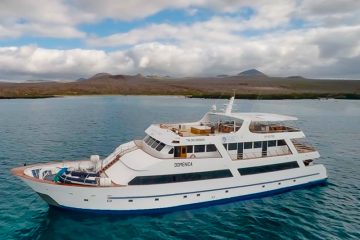DAY 1: FLIGHT TO GALAPAGOS
This day you will fly from Quito, Ecuador to the Galapagos. Due to the Galapagos Government, a fee of 20 USD must be paid for the migration control card. Afterwards, you will enjoy a quick 4 hour flight, with a quick stop at Guayaquil.
Once in San Cristobal, passengers must go through an inspection point at the airport to make sure that no foreign plants or animals are being introduced to the archipelago. Also, this inspection point is where passengers have to pay for the entrance to the Galapagos National Park under the following parameters: Adult Passengers $100 and Children $50 (under 12 years old).
Later on, our guide will pick you up and will carry the luggage to the bus from the port, that transports the passengers, to the Catamaran Semana Journey on a motorized boat called panga.
PM: INTERPRETATION CENTER
This is an interpretation center with exuberant gardens and stunning ocean views in contrast with the 1960´s buildings in Charles Darwin Center. Visitors at the interpretation center can learn a lot about the geological and human history of the islands, conservation facts and natural history. This is the oldest museum of Natural History in Galapagos Islands that is trying to preserve the nature of the islands.










 WhatsApp us
WhatsApp us